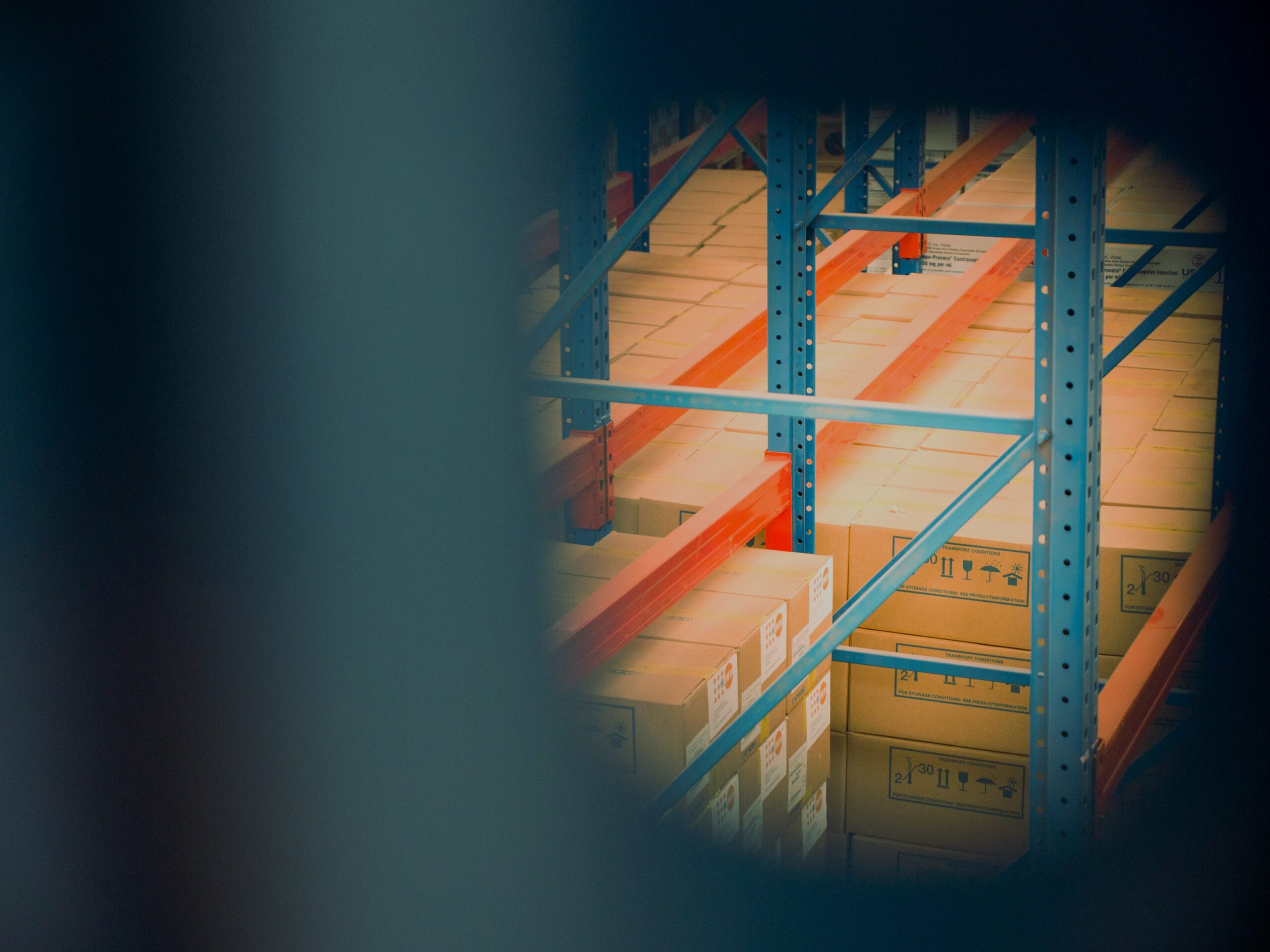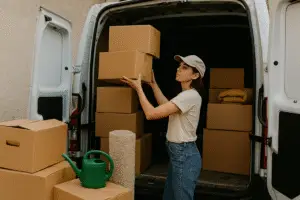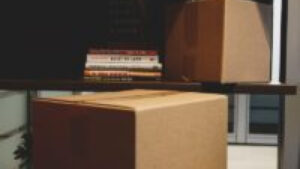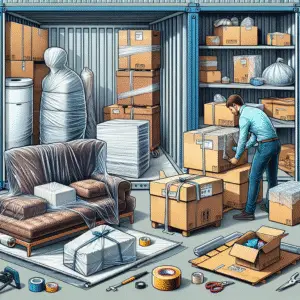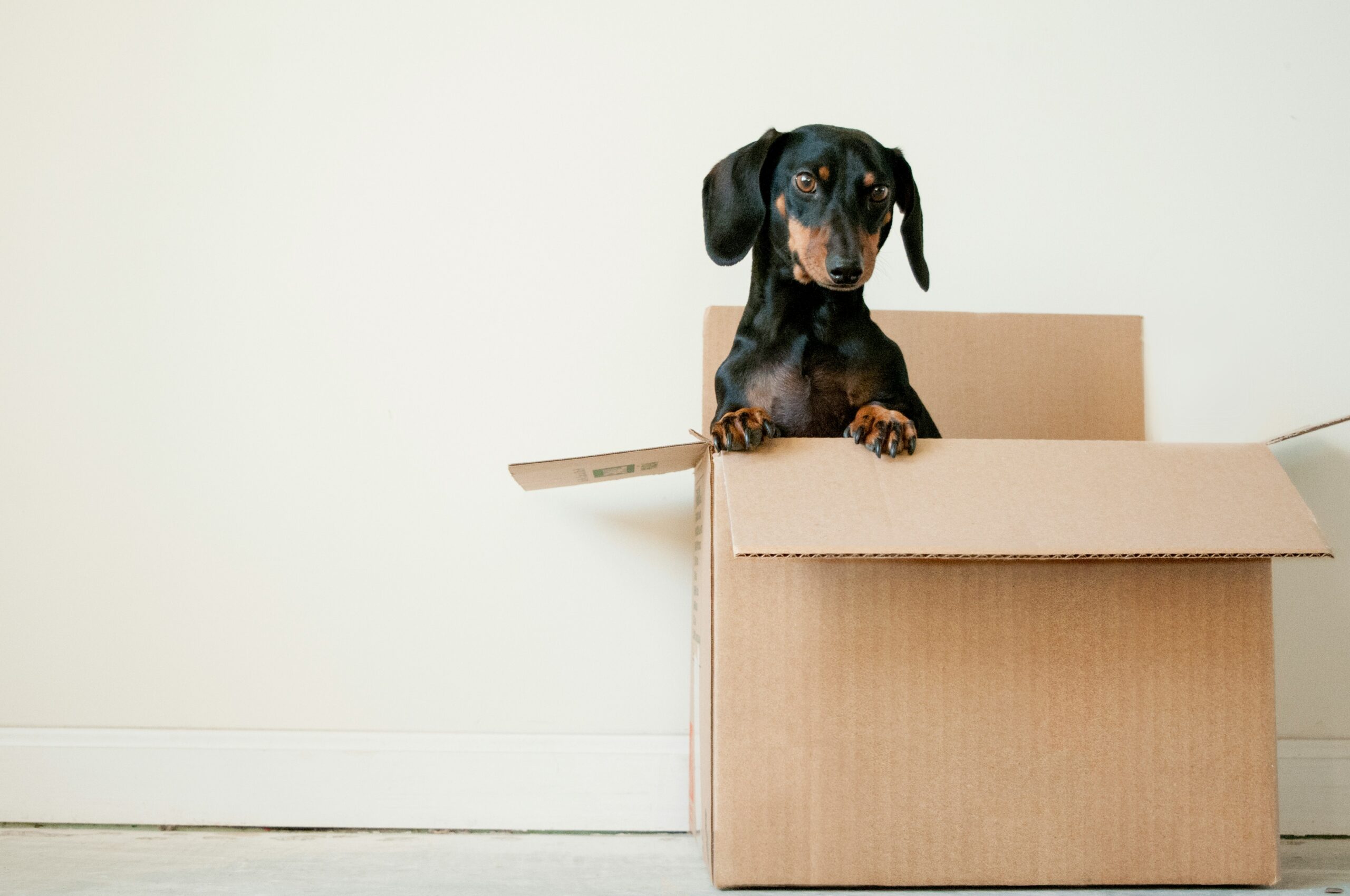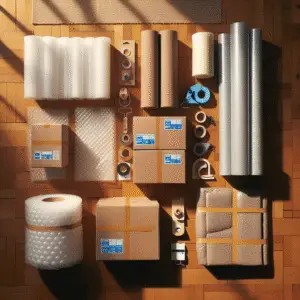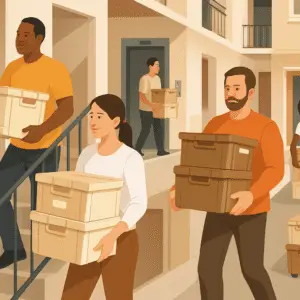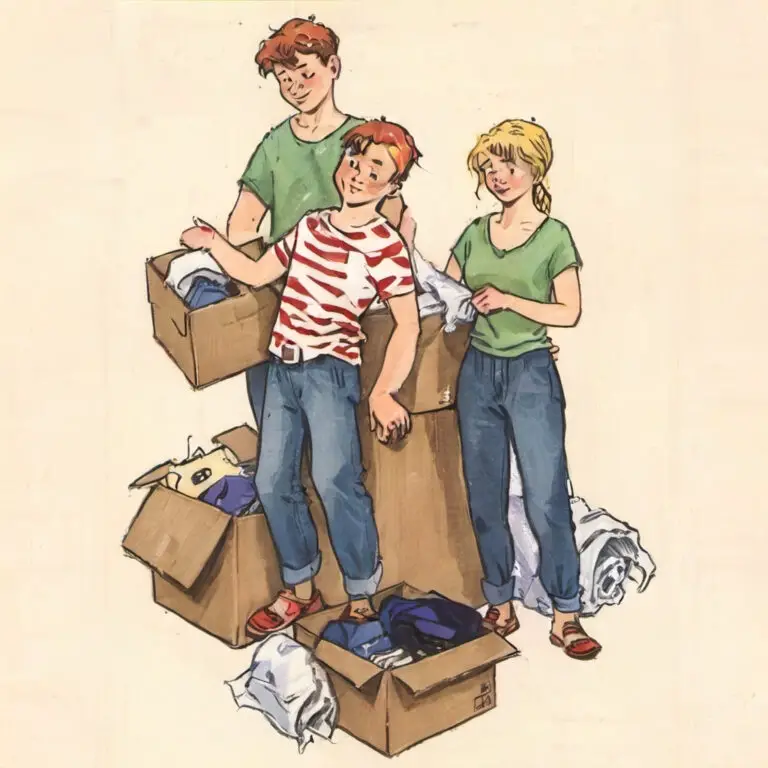Essential Packing Supplies and Tips for a Successful Self-Move
Packing Supplies for a Self-Move
Moving can be stressful and overwhelming, especially when you have to do it all on your own. One key aspect of a successful self-move is having the right packing supplies. This blog post will discuss the essential packing supplies you will need for a self-move.
Regarding packing supplies, it’s essential to be prepared and have everything you need. One of the first things you should consider is the type and size of boxes you will need. Different items require different kinds of boxes for optimal protection during the move. For example, fragile items like glassware and dishes should be packed in sturdy, double-walled boxes to prevent breakage. On the other hand, clothing and linens can be packed in regular cardboard boxes.
In addition to boxes, you will also need packing tape to secure your boxes and prevent them from opening during transit. Invest in good quality, robust, and durable packing tape. Having a tape dispenser on hand is also a good idea to make the packing process faster and more efficient.
You will need plenty of packing paper and bubble wrap to protect your belongings from damage. Packing paper can be used to wrap fragile items individually, providing an extra layer of protection. Bubble wrap is excellent for cushioning delicate items and preventing them from shifting inside the boxes during the move. It’s essential to use enough packing paper and bubble wrap to protect your items.
Another essential packing supply is moving blankets or furniture pads. These thick, padded blankets wrap and protect large furniture pieces like sofas, tables, and dressers. They provide an extra cushioning layer and help prevent scratches and dents during moving. Moving blankets can also protect valuable artwork or mirrors.
In addition to the essential packing supplies mentioned above, you may find a few other items helpful during your self-move. These include mattress covers to protect your mattresses from dirt and damage, plastic wrap to secure and protect items with awkward shapes, and labels or markers to mark the contents of each box for easy unpacking.
Having the right packing supplies is crucial for a smooth and successful self-move. By being prepared and having all the necessary supplies, you can ensure that your belongings are protected and arrive at your new home in the same condition as before the move. So, make a checklist of all the necessary packing supplies and start gathering them well in advance to avoid any last-minute stress or hassle. When it comes to moving, having the right boxes is crucial. Not only do you need a variety of sizes to accommodate different items, but you also need boxes that are sturdy enough to withstand the weight and protect your belongings during the move.
As you prepare for your move, it’s essential to have a good supply of boxes that can handle the task.
One type of box that you may need is a small box. These are perfect for heavy items such as books, canned goods, or small appliances. Their compact size makes them easy to handle and stack, ensuring your items are secure during the move. Small boxes are a must-have for packing up your library or kitchen pantry.
Medium boxes are another essential type of box. These boxes are perfect for packing kitchenware, clothing, or toys. Their size is ideal for items that are not too heavy but still need some protection. From pots and pans to shirts and shoes, medium boxes can handle various items, making them a versatile choice for your move.
Large boxes are the way for more oversized, lightweight items, such as bedding, pillows, or lampshades. These boxes provide ample space for your items while still being easy to handle. Whether you’re packing up your bedroom or living room, large boxes will ensure your items are protected and secure during the move. Extra-large boxes are an excellent option if bulky items need to be packed. These boxes are designed to accommodate comforters, pillows, or clothing that may take up more space. With their sturdy construction and generous size, extra-large boxes are perfect for those oversized, lightweight items that need extra protection.
When it comes to your wardrobe, you’ll want to invest in wardrobe boxes. These boxes are specifically designed for hanging clothes, allowing you to keep your garments wrinkle-free during the move. With a built-in hanging rod and ample space, wardrobe boxes make transporting your clothing easy from one location to another without folding and packing.
Dish packs are a must-have for fragile items such as dishes and glassware. These boxes are sturdier than regular boxes and have dividers to protect and secure your fragile items. With their reinforced construction and specialized design, dish packs provide the extra protection your delicate items need during the move.
In conclusion, having the right boxes is essential for a successful move. From small boxes for heavy items to wardrobe boxes for hanging clothes, various box types accommodate your belongings. By investing in sturdy boxes specifically designed for different items, you can ensure your belongings are protected and secure during the move. So, as you prepare for your next move, stock up on the right boxes to make the process as smooth and efficient as possible.
Packing Materials
In addition to boxes, you will need various packing materials to ensure the safety of your belongings. Here are some essential packing materials for a self-move:
- Packing paper is used for wrapping fragile items and filling empty spaces in boxes. It is essential to wrap delicate items individually to prevent them from knocking into each other during transportation. This will help minimize the risk of damage and ensure that your items arrive at your new home in one piece.
- Bubble wrap: Provides extra protection for delicate items like glassware, electronics, or artwork. The air-filled bubbles act as a cushion, absorbing any shocks or impacts that may occur during the move. Wrap each fragile item with bubble wrap to provide additional protection and peace of mind.
- Packing tape: This is essential for sealing boxes securely. When packing your belongings, it’s crucial to use strong packing tape to seal the boxes tightly. This will prevent the boxes from accidentally opening during transportation and keep your items safe and secure.
- Markers: These are used to label boxes with their contents or room destination. Labeling your boxes is an essential step in the packing process. By writing down the contents or room destination on each box, you can quickly identify and locate specific items when unpacking in your new home.
- Furniture blankets: Protect furniture from scratches and dings during transit. Moving furniture can be challenging, and protecting your pieces from potential damage is essential. Furniture blankets are thick, padded blankets wrapped around your furniture to provide a protective layer and prevent scratches or dings during the move.
- Stretch wrap: Secures furniture drawers and doors to prevent them from opening during the move. Stretch wrap is recommended to ensure that your furniture remains intact during transportation. This plastic wrap can be tightly wrapped around furniture drawers and doors, keeping them securely closed and preventing any unexpected openings during the move.
When gathering your packing materials, it is essential to consider the quantity needed based on the size of your move. It is always better to have more packing materials than you think you will need, as it is better to be over-prepared than under-prepared. Additionally, consider the quality of the packing materials you choose. Investing in high-quality materials will provide added protection and peace of mind during your move.
Tools and Equipment
In addition to packing supplies, you may need tools and equipment to facilitate your self-move. Here are a few items that can come in handy:
- Utility knife: Useful for cutting packing tape and opening boxes.
- Furniture dolly: Helps in moving heavy furniture or appliances with ease.
- Hand truck: Ideal for transporting multiple boxes or heavy items.
- Furniture sliders: Make it easier to move heavy furniture across floors.
- Straps and ropes: Securely fasten items to prevent them from shifting during transit.
- Moving blankets: Protect your furniture from scratches and damage during the move.
- Bubble wrap: Wrap fragile items like glassware, dishes, and electronics to prevent breakage.
- Packing peanuts: Fill empty spaces in boxes to prevent items from shifting.
- Measuring tape: Ensure furniture or appliances fit through doorways and hallways.
- Toolset: Have a basic set of tools handy for disassembling furniture or removing fixtures.
- Labels and markers: Clearly label boxes with contents and room destination for easy unpacking.
- Tape measure: Measure doorways, stairwells, and furniture to ensure a smooth move.
- Gloves: Protect your hands while moving heavy or sharp objects.
- Moving straps: Provide additional support when lifting and carrying heavy items.
- Ratchet straps: Secure large or awkwardly shaped items to the moving truck.
- Moving boxes: Choose various sizes to accommodate items and ensure efficient packing.
Having these tools and equipment at your disposal can make your self-move much smoother and more efficient. They will save you time and help protect your belongings during the relocation process. Gather all the necessary tools and equipment before packing to ensure a stress-free move.
Estimating Costs
When estimating the help needed for large or heavy objects, it’s essential to consider the associated costs. Hiring professional movers can be expensive, especially if multiple items require assistance. Research different moving companies and request quotes to compare prices and services offered. Some companies may charge additional fees for handling oversized or delicate items.
If you seek help from friends and family, it’s essential to factor in any costs that may arise. For example, these expenses should be considered if you need to rent a truck or purchase packing materials. Additionally, consider compensating your helpers for their time and effort, whether through a small monetary payment or a gesture of gratitude.
Insurance Coverage
There is always a risk of damage or injury when dealing with large or heavy objects. It’s crucial to ensure adequate insurance coverage to protect yourself and your belongings. If you hire professional movers, inquire about their insurance policies and what they cover. If you rely on friends and family for help, check if your homeowner’s or renter’s insurance covers damages during a move. If not, consider purchasing additional insurance to safeguard your belongings.
Specialized Equipment
Moving large or heavy objects requires specialized equipment to ensure a safe and efficient relocation. Professional movers are equipped with tools such as dollies, straps, and ramps that can make the process easier. If you choose to move the items yourself with the help of friends and family, assess whether you have access to such equipment. If not, consider renting or purchasing the necessary tools to facilitate the move and minimize the risk of injury or damage.
Time and Planning
Moving large or heavy objects can be time-consuming, especially if you rely on assistance from friends and family. It’s essential to plan and allocate enough time for the move. Communicate with your helpers and coordinate schedules to ensure everyone is available when needed. Consider creating a detailed moving plan that outlines each person’s tasks, timeline, and responsibilities. This will help streamline the process and minimize any potential delays or confusion.
In conclusion, estimating the help needed for moving large or heavy objects requires careful consideration of various factors. Assess the weight and size of the objects, evaluate the accessibility of the locations, and honestly evaluate your physical abilities. Explore options such as hiring professional movers, enlisting the help of friends and family, or utilizing online platforms. Consider the associated costs, insurance coverage, and any specialized equipment required. Proper planning and communication are vital to ensuring a successful and stress-free move.

